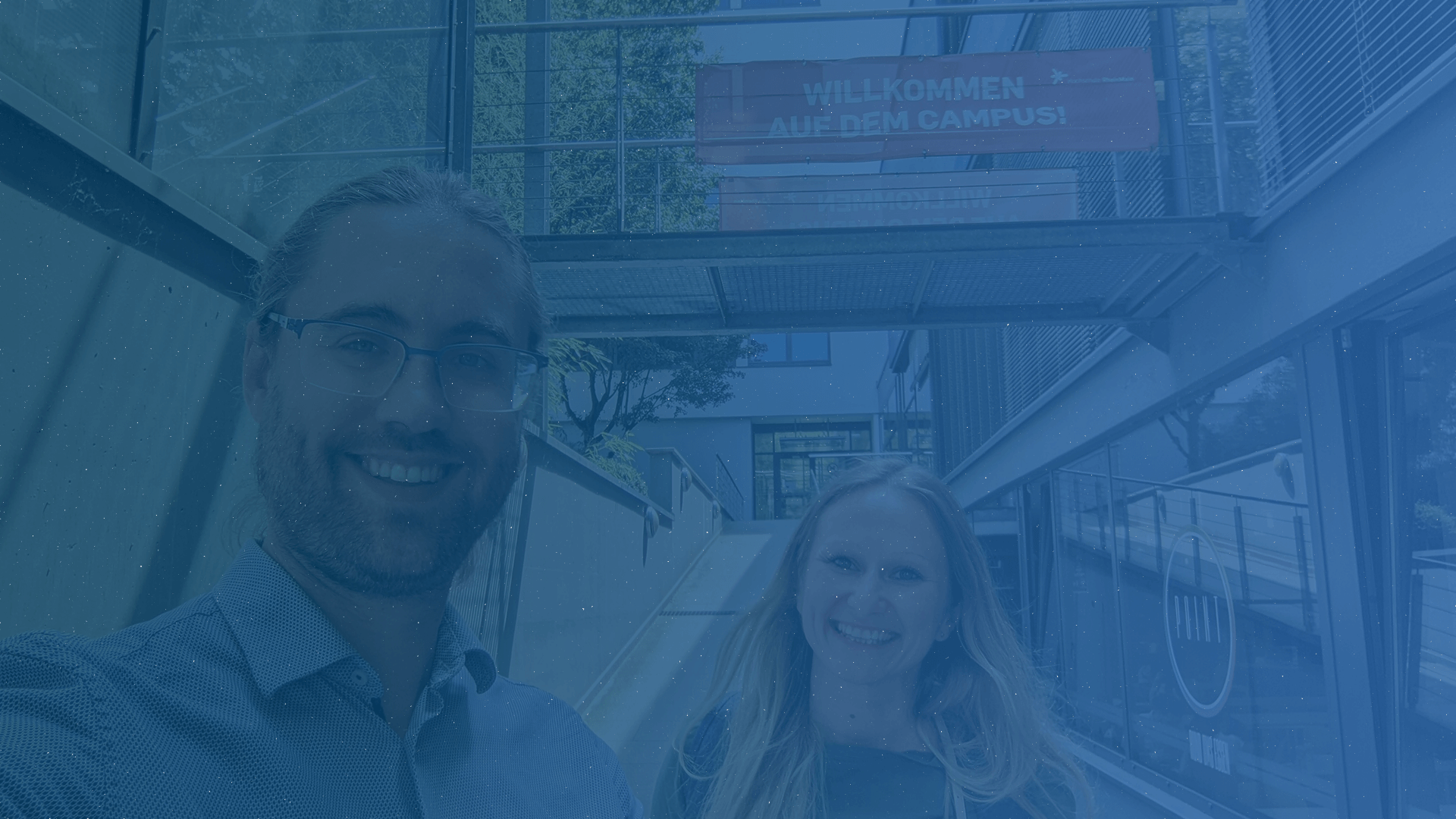Yes, you read that right! Two of our colleagues have taken the plunge and gone back to university. But don’t worry, they will stay with us as Synabis.
Katharina Pister and Lennart Werner were recently invited to give a guest lecture at RheinMain University of Applied Sciences.
In the course of Prof. Dr. Karin Gräslund, our two experts presented ‘GDPR in Financial Reporting – Implementations in the area of Data Management’ to approx. 30 students from master’s degree programmes with a specialisation in finance. The focus in this case was on the problem of how to best assess the personal reference of data definitions and how to implement this directly technically.
The “Synabi professors” will best tell you themselves exactly how the lecture went.
Hi Lennart, Hi Katharina!
Tell me, why did you go to the RheinMain University of Applied Sciences?
We were given the opportunity to explain GDPR in financial reporting during a guest lecture. We focused on the problem of how the personal reference of data definitions can be assessed and technically located. Because it is often the case that the responsibility for the definition of the data is unclear.
And of course, you had the solution directly at hand, right?
It is not quite that simple. First you have to understand the problem and know how to classify it correctly. Create the basics in data management, so to speak. What are business and technical metadata? Where do responsibilities for the data lie? Here we relied on our Data Management Journey. The various solutions of the Journey help to classify the topic correctly right from the start and thus prevent mistakes.
I see – so could you suggest a way to easily identify one’ s personal data?
If you want to see it that way, yes. This works both in theory and in practice. As is often the case, you start with the theory. And the theory is easily explained: the Business Glossary provides information on the business metadata – the Data Catalog is responsible for the technical side. Once these two steps have been completed, they must be connected. This is done with the support of AI in the module “Integrated Metadata Management“.
All this is important in order to understand the inheritance of the protection need – at which the GDPR takes effect – and to be able to protect one’s data well.
Sounds plausible. What happened next?
Once the theory was explained, it was time for practice. The easiest way for us to demonstrate this was with our software D-QUANTUM. This also included a premiere: our Data Management Blueprint for D-QUANTUM made its first appearance! With the Blueprint, we provide various best practices for data management, among others a solution approach for the protection needs analysis. We were able to use the example to explain the scope of our solutions and to illustrate the dependencies between the GDPR and data management.
Were the students able to follow well?
Yes, absolutely! Although the level was adapted to master’s students, the practical example in particular was a good fit. There were really good questions at the end, so we assume that they were able to follow us well. Another feedback was that D-QUANTUM is a well-organised and easy-to-understand platform. That’s something we like to hear, of course.
And so do we! So how was it for you?
In general, we were pleased about the high attendance – after all, the lecture was also streamed and the weather rather invited to the swimming lake than to the uni. For us, it was also nice to get to know the university and the students in person. After all, there have been no face-to-face events for a long time.
Speaking of which – will there be more lectures?
Yes, an annual repetition is currently planned. Networking with data experts from the financial sector is very important not only for us, but especially for the students. Perhaps one or the other has also become interested in getting to know D-QUANTUM even better. After all, we are always on the lookout for young talents.
Well then, we look forward to next year. Thank you both!
You’re welcome!







